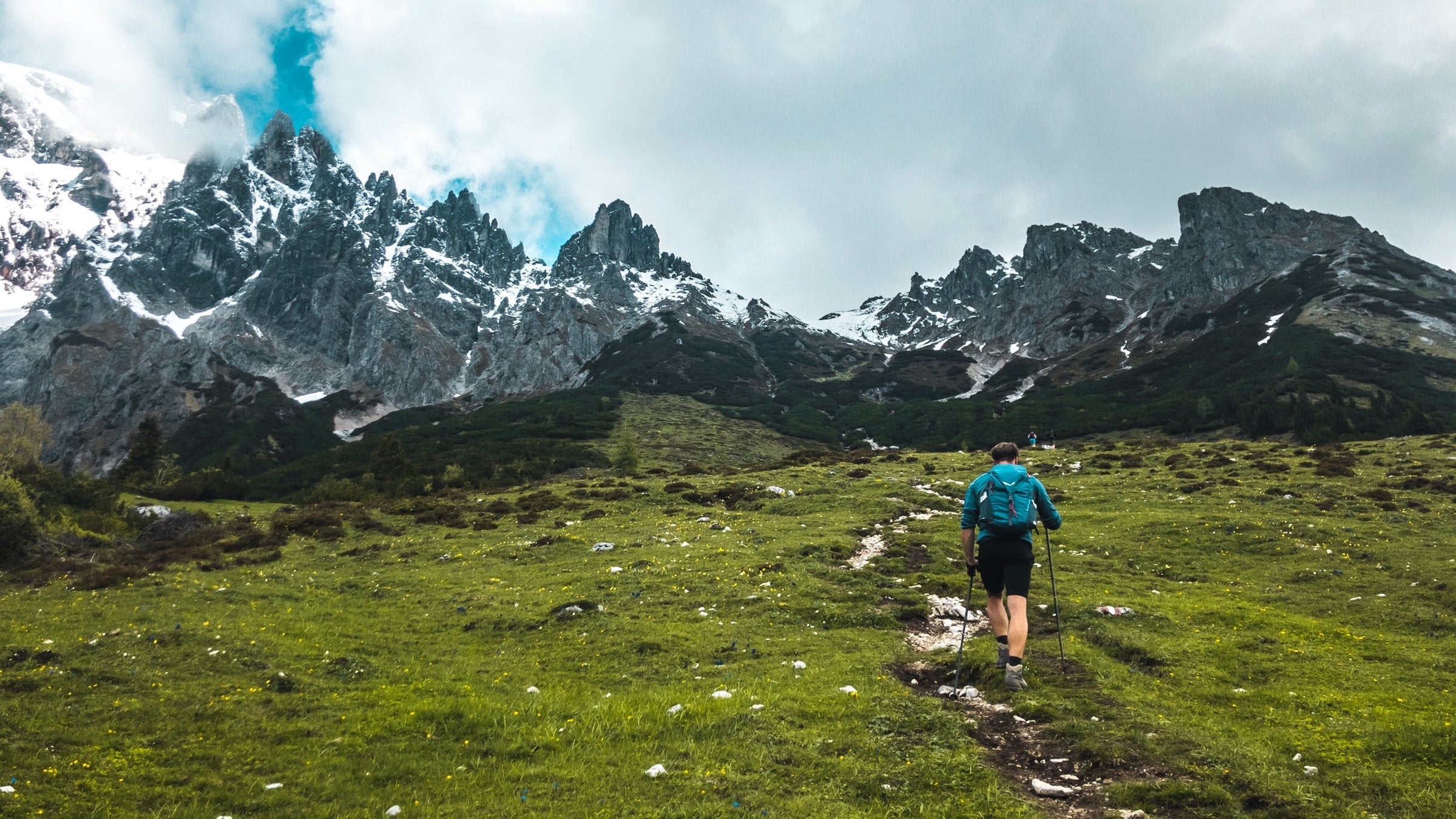Want to Hike Better? Try Focused Training.

(Photo: Alex Trail)
If you’re a hiker, chances are you enjoy a handful of other outdoor activities, too. Spending time biking, skiing, running, or playing sports can be a great way to enjoy fresh air and get some exercise. But will it make you a stronger hiker?
“I’m a big believer in finding ways to utilize one outdoor pursuit and have it improve another,” says mountain performance coach Jason Antin. “But they’re not always complimentary.”
In other words, mountain biking three days a week won’t necessarily help you crush your summit goals on the weekend if you don’t include some more focused training. Antin likes to break fitness down into four categories: aerobic, anaerobic, technical, and strength.
Aerobic exercise, or what we usually think of as “cardio,” should be the main focus of training for hiking. Ideally, you should spend 60 to 80% of your workout time working on your aerobic base, says Antin. The remaining time can be split between anaerobic exercise (intense, short bursts of work), technical (which works your ability to move over mountain terrain efficiently), and strength training.
“The better your aerobic capacity, the more efficiently you can do all mountain sports,” he says.
Aerobic capacity is the foundation for general fitness, so a variety of activities can contribute to improving it—bonus points if you can find ways to build your aerobic base while doing activities you enjoy. While training for aerobic capacity, you should be working hard, but able to speak in short sentences; think jogging and moderate hiking. It takes time to build your aerobic base, so make it a long-term goal to spend multiple days a week focused on it. Activities like mountain biking can be aerobic, but often require a higher energy output, putting them in the category of anaerobic exercise.
Activities that elevate your heart rate even more and get you panting, like a game of soccer or a punchy mountain bike climb work your anaerobic capacity. Though it won’t contribute to your aerobic base, anaerobic fitness is still key to your all-around outdoor fitness; you tap into it when powering up a steep hill, for example. When working out anaerobically, you’ll get fatigued more quickly. If your focus is becoming a stronger hiker, Antin recommends doing anaerobic exercise—like sprints—only about once a week.
Technical training helps you move more efficiently, especially while hiking rough or rocky trails. Your technical ability will often improve simply by “doing the thing.” That is to say, the more you hike, the more efficiently you’ll be able to move in the mountains. So, technical training needn’t be a regular focus of your workouts. You will receive some benefit by going out on trail runs or enjoying weekend hikes.
Lastly, activities that build your strength, like rock climbing or weight lifting, offer some benefit to your hiking fitness. Mainly, they contribute to durability—the stronger your body is, the less likely you are to experience injuries or pain on the trail. That said, visiting the rock climbing gym four days a week will only provide marginal benefits when it comes to hiking, especially if it’s at the expense of training your aerobic base.
Doing multiple outdoor activities forces your body to move in different ways. If you just do the thing, you’ll be limited in mobility. Activities that enhance your mobility, like yoga, are good supplements for a training routine that prioritizes aerobic activity. “Cross-training forces you to work on a mobility plane that you might not focus on otherwise,” says Antin.
Antin also recommends focusing on your feet—work in activities that tax the foot muscles 3 to 5 times per week ahead of a big backpacking objective. In this way, hiking, trail-running, and hike-specific workouts are better preparation than biking or swimming.
The bottom line is, cross-training does provide some added benefit for your hiking fitness, but shouldn’t replace specific workouts altogether. Gym workouts allow you to combine aerobic, anaerobic, and strength training to prepare your body for the uneven trail.
So how do you motivate yourself to do hiking-specific workouts when the mountain bike or skis are calling your name? Do bodyweight exercises at the local park. Or, find ways to remind yourself what you’re training for. Antin recommends breaking out your hiking gear, even if you’re just training in your backyard or the gym. “Doing things with the backpack on that you’re going to use is motivational. It helps me think of that climbing trip that I’m training for,” he says. “It can help you be motivated to do some stairmaster time in the gym and serve as a reminder of the goal your set for yourself.”
In the end, any activity is better than nothing. A bike ride or game of tennis will prepare you for hiking more than sitting on your couch will. But if you have big hiking goals, focusing your activity on aerobic exercise and hiking-specific workouts will help you achieve them.
For more training tips from Jason Antin, sign up for 6 Weeks to Trail Fit.